
Not too long ago, we published our soya milk recipe, including a super fun tutorial recorded in Borneo (South Asia). As you know, soya milk is a traditional drink in many places around the world, especially in Asia and South America. However, nowadays, it’s also popular all over Europe, since it’s become a staple in vegan diets, among others.
At the time being, however, soy milk is quite a polemic one, and as a result, its consuption is decreasing. This is due to the highly industrialized process involved in soya production, which results in the destruction of big extensions of rainforest in the Amazons. You can read more about it in our post “Soya’s Yin Yang”.
On the other hand, it’s so easy to use Vegan Milker to make milk from any other seed or grain, that we’ve focused our efforts in making milk from other less conflictive ingredients.
| NUTRITIONAL VALUES | x 100 ml | x 250 ml | |
|---|---|---|---|
| Energy value | 26,80 | 66,90 | kcal |
| 112,00 | 280,10 | kj | |
| Fats | 1,20 | 3,00 | g |
| *of which saturated | 0,20 | 0,40 | g |
| Carbohydrates | 1,30 | 3,10 | g |
| *of which saturated | 0,40 | 1,10 | g |
| Dietary fiber | 0,60 | 1,40 | g |
| Proteins | 2,20 | 5,50 | g |
| Salt | 0,00 | 0,00 | g |
| VITAMINS AND MINERALS | |||
| Calcium | 16,60 | 41,60 | mg |
| Iron | 0,90 | 2,40 | mg |
| Magnesium | 16,80 | 42,00 | mg |
| Phosphorus | 42,20 | 105,60 | mg |
However, we recently received a question from a reader of ours, Concha Gómez, about homemade soya milk. She let us know that, when preparing the milk I told you about at the beginning of this very post, you get a small portion of thick cream which might make the milk a bit unappealing. How is it possible that we never knew it when we first developed the recipe?
It all came down to the filter change, since the holes in the mesh are slightly bigger and therefore can make for some problems when making soya milk the way we used to.
That’s why we went back to the kitchen in order to develop a new and improved recipe.
Ingredients:
- 100 grams white soya (organic is best)
- 1 litre of warm water
- A pinch of salt
- Some flavourings such as vanilla, masala (one tablespoon and optional)
 Instructions:
Instructions:
- Soak soya beans for 8-12 hours.
- Discard the soaking water and boil soya for an hour (with the lid on) or for 25 minutes if using a pressure cooking (in this case, you need to discard the soaking water too)
- Put cooked soya beans and warm water (60-70ºC) in the Vegan Milker filter mesh and blend with an inmersion blender for a minute.
- Release the filter attachment using the “express filtering” trick to aid the final press. It will be harder when using any cooked bean/grain/nut.
- Press the pulp with the mortar to squeeze the last droplets of milk
- The remaining pulp can be kept in the fridge and then used in other vegan or vegetarian recipes.
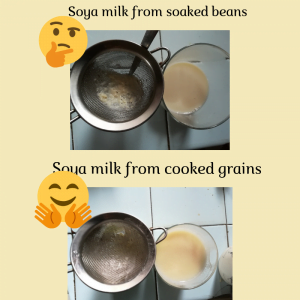 Tips and tricks:
Tips and tricks:
1- Using this technique, you no longer get the cream layer when making soya milk. You can see the different in these two photos.
2- You can spice up this recipe with any flavoring that you’d like by adding a small spoonful of vanilla/masala/cinnamon to the filter. This will yield a spiced pulp, but it still can be used in many recipes.
3- The remaining pulp is called okara and can be used in both sweet and savory recipes.
- Carrot and soy pulp cupcakes (recipe by www.thebluecrane.asia)
- Veggie burgers (sub oat milk pulp with 100 grams of soya milk pulp)
Thanks for making us improve our recipe Concha! It’s always nice to learn new things.
Cheers!

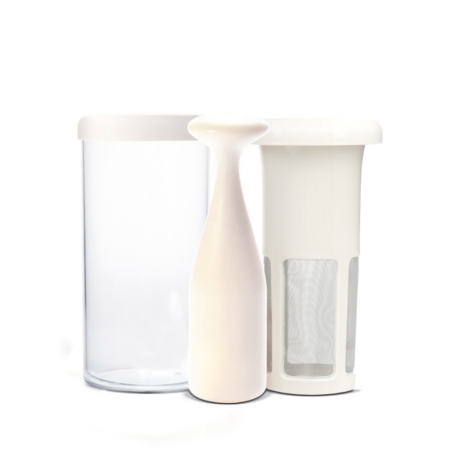
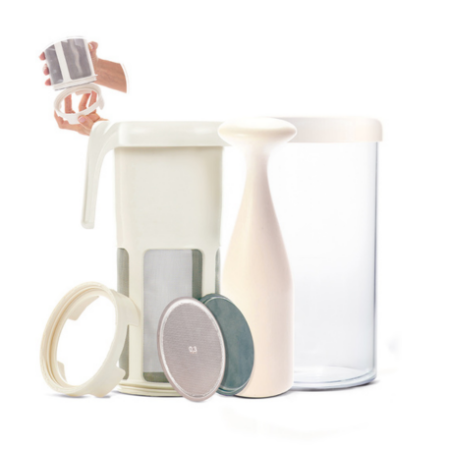
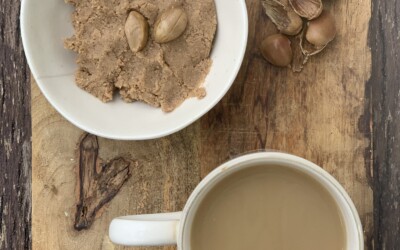
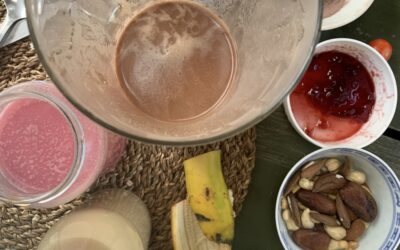
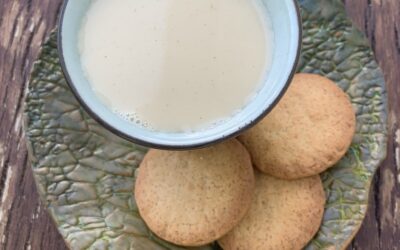
Looking for a recipe to make soy milk from soy beans that are cooked.
THis was not it.
Hi Dave, I’m sorry, I don’t understand your message.
I have few questions:
1) Is this warm water should be from boiling or should be a new fresh and warm water? What would be the difference?
2) Is there difference in quantity of boiled soya milk versus raw soya beans, except the cream layer?
Hi Tonya,
Warm water: it is new fress and warm water (round 60ºC).
There is not quantity difference. It’s more o less the same quantity. Maybe a little bit more using boiled soya milk.
Have a nice day!
Your ingredient list seems to have an error – it includes for milk as an ingredient – but that cannot be right.
The express filtering was a natural process – I did it on my first use. I was developing a home centrifugal filter but the stab mixer in the vegan milker achieves it even better.
I t would also be good to have comparisons of the final product using different stab mixers to see what works best.
So far I get best results using a Blendtec blender – then freeze pulp in batches. Use a batching Vegan milker with stab mixer – pulp yield has decreased and milk solids proportion has increased.
Hi Mark,
indeed, the milk in the ingredients is an error, thanks for the heads up, I have corrected it.
And thank you for sharing your experience in making plant milks!
Cheers!
So do I still need to boil again after blending. Because I find that the 2nd boiling makes it spoil faster, once out of the fridge.
Dear Deborah, if you make the milk using cooked beans it is not necessary to boil it again. Only in the case that you want to cook with it, f.e. to make a soups, sauces, etc.
so you just boil and blend? I have a vitamix, it will blend ALL the beans with no leftovers…I had a soy milk maker 20 years back for a short time and all I did was put the beans into it overnight and next morning all was done, so there was no soaking and no residue just amazing milk…can’t remember the brand name…so now I am about to boil and blend [!]. So you discard the boil water too?